10 Best Monopods in 2024 – Reviews & Top Picks
Last Updated on

Monopods and tripods can take your photography to a whole new level, but the wrong one won’t give you the crisp images that you’re looking for and can be more of a pain to use than they’re worth.
That’s why we tracked down 10 of the best monopods on the market today, with comprehensive reviews for each one and a thorough buyer’s guide to walk you through everything that you need to know to pick one out.
If you’re ready to take your photography to the next level with a monopod, you’ve come to the right place.
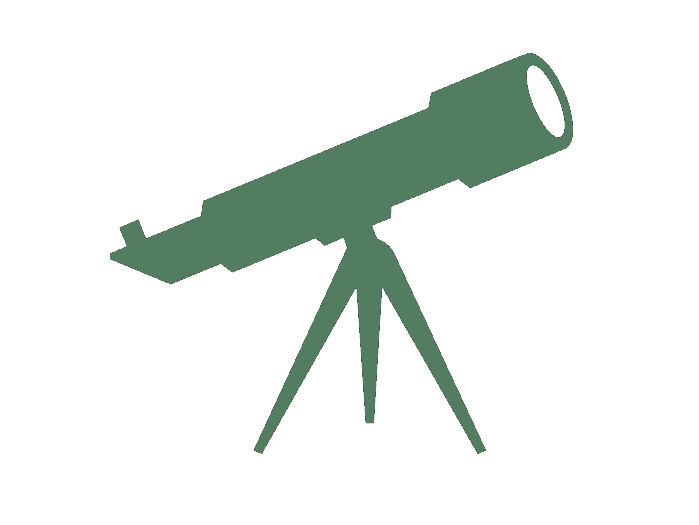
A Quick Look at Our Favorites in 2024
| Image | Product | Details | ||
|---|---|---|---|---|
| Best Overall |
 |
SIRUI P-204SR Professional Camera Monopod |
|
CHECK PRICE |
| Best Value |
 |
Manfrotto MMC3-01 Compact 5 Section Aluminum Monopod |
|
CHECK PRICE |
| Premium Choice |
 |
Manfrotto MVMXPROC5 |
|
CHECK PRICE |
| Best Monopod for Wildlife Photography |
 |
Benro MSD46C SupraDupa Monopod |
|
CHECK PRICE |
 |
Manfrotto XPRO Aluminum Section Monopod |
|
CHECK PRICE |
The 10 Best Monopods
1. SIRUI P-204SR Professional Camera Monopod — Best Overall

| Construction material: | Aluminum |
| Minimum height: | 26.8” |
| Maximum height: | 63” |
| Weight: | 3.1 pounds |
| Weight limit: | 17.6 pounds |
If you’re looking for the best monopod for price and quality, it’s tough to top the SIRUI P-204SR Professional Camera Monopod. It’s a slightly expensive option, but we think that it’s well worth the price with everything that it offers.
First, it has a stable base that you can easily deploy in a wide array of environments. Second, it has a 360-degree pan feature and 20-degree tilt feature, giving you more options than ever when you’re taking photos and videos.
Furthermore, with a height range between 26.8” and 63”, there are not many scenes that you can’t capture. Finally, while it’s a monopod through and through, if you want, you can disconnect the base and get a tabletop tripod from this too.
It’s incredibly versatile, durable, and high quality. It’s easily the best overall monopod on this list.
- Lightweight design
- Versatile height range
- Stable base
- Adjustable 20-degree tilt
- Can turn into a tabletop tripod
- Slightly expensive
2. Manfrotto MMC3-01 Compact 5 Section Aluminum Monopod — Best Value
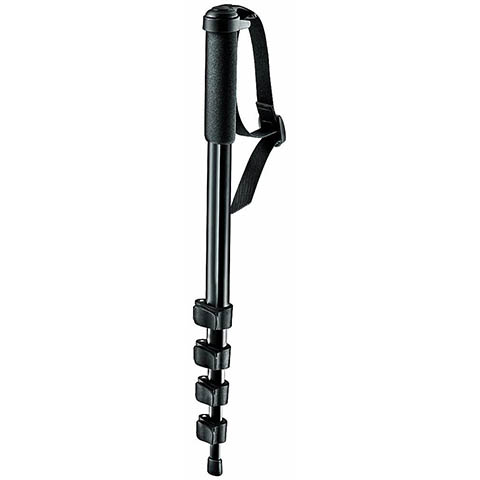
| Construction material: | Aluminum |
| Minimum height: | 15.35” |
| Maximum height: | 57.28” |
| Weight: | 0.64 pounds |
| Weight limit: | 3.31 pounds |
Manfrotto makes tons of great tripods and monopods, so you know that the Manfrotto MMC3-01 Compact 5 Section Aluminum Monopod has great value. It’s a high-quality product that will easily last for years and is easy to use.
That said, it is still a budget choice. First, it doesn’t include any sort of mount, so you’ll need to purchase that separately to use it. Second, while the minimum height is super compact, the maximum height is on the lower side of things at under 5 feet.
Furthermore, while it’s the lightest option on this list, it only supports 3.3-pound setups. Therefore, it’s more of an amateur product. Still, this is easily the best monopod for the money.
- Affordable
- Low minimum height
- Great quality
- Easy to use
- Lightweight design
- Does not include ball mount
- Low maximum height
- Only supports small setups
3. Manfrotto MVMXPROC5 — Premium Choice
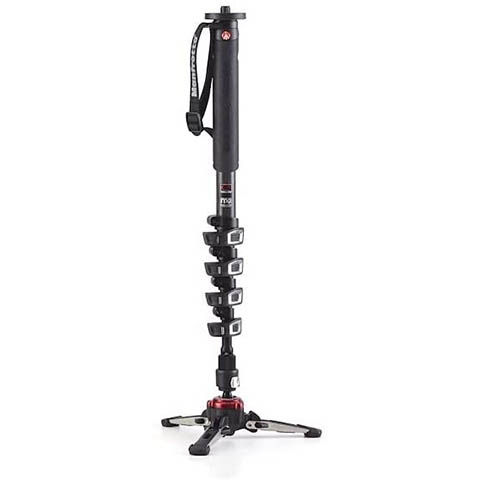
| Construction material: | Carbon fiber |
| Minimum height: | 23.82” |
| Maximum height: | 74.02” |
| Weight: | 2.2 pounds |
| Weight limit: | 11.02 pounds |
If you simply want the best of the best and aren’t worried about the price, consider the Manfrotto MVMXPROC5. While it’s expensive monopods, with everything that it comes with, you won’t need to worry about ever getting another one.
First, Manfrotto used a super high-quality carbon-fiber design with this monopod, so it easily stands up to more abuse than aluminum options. Second, with a maximum height of just over 74”, it easily has one of the highest maximum heights for a monopod.
Additionally, it has a super stable base and can support rigs that weigh up to 11 pounds! The entire monopod weighs just over 2 pounds, making it easy to transport from site to site. Yes, it’s expensive, but it’s also the best of the best.
- Tall maximum height
- Fluid head is great for videography
- Lightweight design
- Durable carbon fiber construction
- High maximum weight limit
- Expensive
4. Benro MSD46C SupraDupa Monopod — Best Monopod for Wildlife Photography

| Construction material: | Carbon fiber |
| Minimum height: | 17.9” |
| Maximum height: | 72” |
| Weight: | 1.3 pounds |
| Weight limit: | 88.18 pounds |
When you’re trying to get a monopod for wildlife photography, you want a lightweight option that can handle all your gear and is durable enough to tackle any environment and trek. That’s precisely what you get with the Benro MSD46C SupraDupa Monopod.
It can handle more weight than any other monopod on this list, and it has a carbon-fiber construction that is more dent and damage resistant than aluminum options. The maximum height is just over 72”, while the minimum height checks in at just under 18”.
One of the best perks of this monopod is that it comes with a 5-year warranty, so you don’t need to worry about anything happening to it any time soon. It is a bit expensive, but if you’re trying to take your wildlife photography photos to the next level, this is what you want.
- Durable carbon-fiber construction
- Outstanding maximum weight limit
- Versatile height range
- 5-year warranty
- Easy to use
- Super lightweight
- Expensive
5. Manfrotto XPRO Aluminum Section Monopod
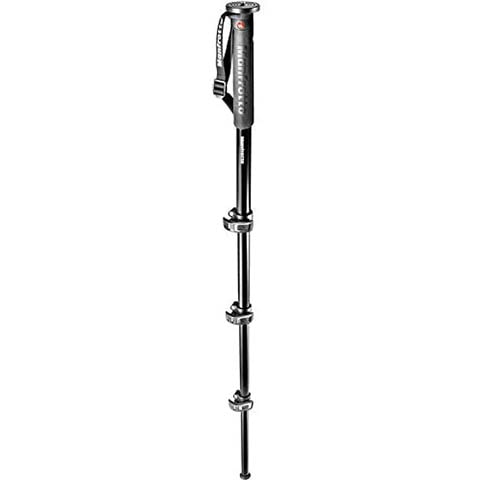
| Construction material: | Aluminum |
| Minimum height: | 22.05” |
| Maximum height: | 70.87” |
| Weight: | 1.64 pounds |
| Weight limit: | 44.1 pounds |
While the Manfrotto XPRO Aluminum Section Monopod doesn’t have a carbon-fiber construction, it’s still a high-quality product that can handle most situations.
It’s incredibly lightweight and has the second-highest weight limit on this list. With the ability to support over 44 pounds of equipment, there are few rigs that this monopod can’t handle.
Even with such a high weight limit, it weighs just under 2 pounds, which makes it easy to take with you no matter where you need it. Furthermore, the maximum height is just under 71”, and its minimum height is on the smaller side of things at 22”.
So, while we would prefer if Manfrotto used a carbon-fiber construction with this product, we can’t complain considering the price point that it’s at and the features it has.
- High maximum weight limit
- Outstanding minimum and maximum height
- Lightweight design
- Great mix of price and quality
- High-quality product
- Not a carbon-fiber construction
6. Benro Aluminum 4 Series Flip-Lock Video Monopod
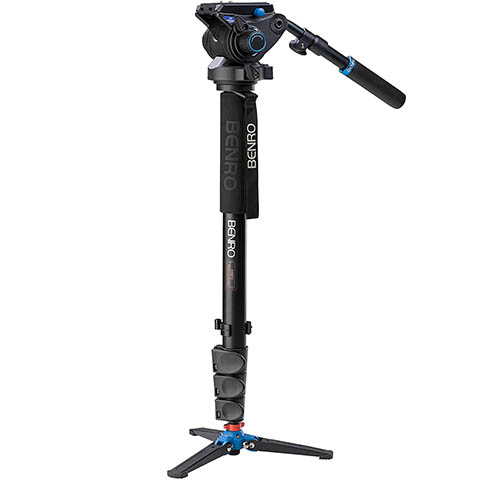
| Construction material: | Aluminum |
| Minimum height: | 27.8” |
| Maximum height: | 70.5” |
| Weight: | 5.5 pounds |
| Weight limit: | 13.2 pounds |
If you’re looking for a monopod specifically for videography, you should consider the Benro Aluminum 4 Series Flip-Lock Video Monopod. It’ll work for photography too, but it gives you the smoothest possible operation in pan settings with a fluid head design.
It also has a stable base, which helps with getting steady shots. The maximum height is 70.5” and the minimum height is just under 28”.
Still, the primary tradeoff with all these features, especially the fluid head, is the weight. At 5.5 pounds, it’s easily the heaviest monopod on this list. While 5.5 pounds might not sound like much, when you’re transporting it over long distances, it can take a toll.
Finally, it’s also expensive, so unless you plan on using its videography settings, it makes more sense to save your money and go with another top-notch option on this list.
- Includes a 5-year warranty
- Stable base
- Versatile minimum and maximum height
- High-quality product
- Smooth movement
- Expensive
- Heavy
7. Vanguard VEO 2S AM
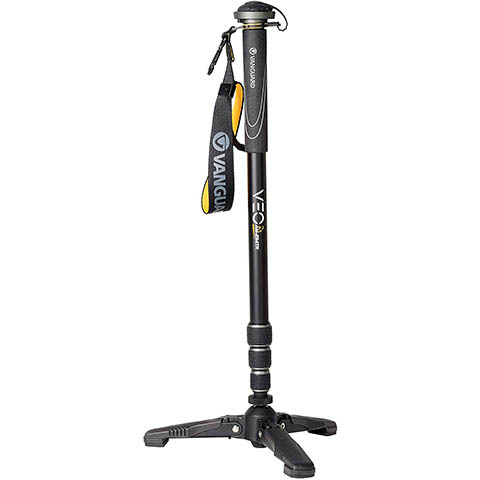
| Construction material: | Aluminum |
| Minimum height: | 20.5” |
| Maximum height: | 61” |
| Weight: | 1.77 pounds |
| Weight limit: | 11 pounds |
Not too many monopods specifically cater to amateurs, but that’s exactly what the Vanguard VEO 2S AM does. What’s nice is that it still has the potential to deliver professional-quality results.
It can support DSLR cameras, and it comes with a smartphone holder and a Bluetooth remote, which makes it easy to take photos of yourself. It has a sturdy base, and it weighs less than 2 pounds!
However, while it’s an affordably priced option specifically geared toward amateurs, that does come with a few drawbacks. First, it doesn’t have a high maximum height. It tops out at 61”, which is high enough for most jobs but is on the lower end of things.
But the minimum height is 20.5”, so that helps balance things out and makes it easier to transport to different locations!
- Affordable
- Stable base
- Lightweight option
- Includes a Bluetooth remote
- Includes a smartphone holder
- Not that high quality
- Low maximum height
8. SIRUI P-326
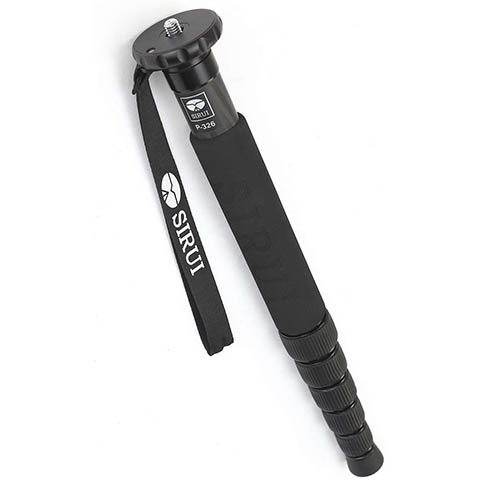
| Construction material: | Carbon fiber |
| Minimum height: | 15” |
| Maximum height: | 61” |
| Weight: | 0.88 pounds |
| Weight limit: | 22 pounds |
The Sirui P-326 is compact, lightweight, and durable. This makes it an outstanding choice if you’re looking for a monopod that you can quickly throw into a backpack when you head out on a hike.
Furthermore, it’s affordably priced, especially when you consider that it boasts a carbon-fiber construction. It weighs less than a single pound and folds down to just 15”!
Finally, it supports camera setups up to 22 pounds, which is more than enough for rigs that you’ll be taking with you on hikes.
However, the maximum height for this monopod is just 61”, so if you’re trying to capture a higher target, you can run into problems. But most of the time, this monopod will give you exactly what you need when you’re out and about!
- Affordably priced
- High-quality carbon fiber construction
- Super lightweight design
- High maximum weight limit
- Low minimum height range
- Low maximum height
9. Benro Adventure 4 Series
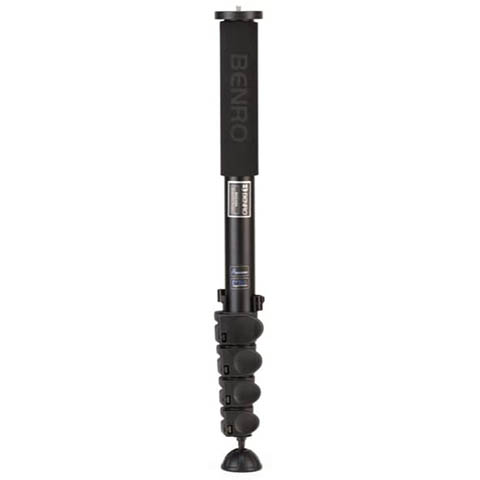
| Construction material: | Aluminum |
| Minimum height: | 21.3” |
| Maximum height: | 75.2” |
| Weight: | 1.85 pounds |
| Weight limit: | 39.7 pounds |
If you need a monopod that gets quite tall, the Benro Adventure 4 Series is what you want. With a maximum height of over 75”, it is hard to find a monopod that goes any higher. What’s surprising is that despite this massive maximum height, the minimum height is just over 21”!
It’s also extremely lightweight, weighing under 2 pounds. It can support almost 40 pounds of gear, so it can handle almost anything that you throw at it.
However, it does have an aluminum construction, and you need to be especially careful when transporting it. While we recommend a case when transporting any monopod that you have, it’s a necessity with this one, or else it’ll get dented and dinged up in no time.
- Versatile height range
- High maximum weight limit
- Lightweight construction
- Folds down compact
- Affordably priced
- Not the most durable construction
10. Manfrotto Element MII
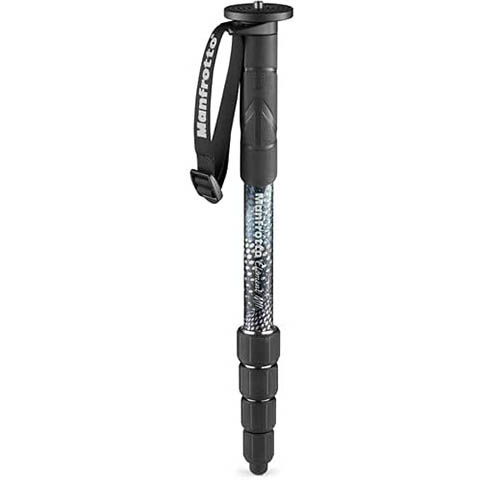
| Construction material: | Aluminum |
| Minimum height: | 16.92” |
| Maximum height: | 62.59” |
| Weight: | 1.1 pounds |
| Weight limit: | 33 pounds |
While the Manfrotto Element MII might not be the best product that Manfrotto has ever released, it’s still good enough to earn a spot on this list. The top-selling point for the Manfrotto Element MII is the price, but high-quality construction is right behind it.
It’s one of Manfrotto’s smaller monopods, with a minimum height under 63”, but that also means it has one of the lowest minimum heights at under 17”.
But even with the small size, it can still handle heavy rigs. With a 33-pound weight limit, few setups are too much for this monopod. Finally, it weighs just over 1 pound, making it lightweight and easy to transport over long distances.
However, with its aluminum construction, you do need to be extra careful when transporting it, as it is more prone to dents and damage.
- Affordably priced
- High-quality construction
- Folds down compact
- High weight limit
- Lightweight construction
- Not that durable

Buyer’s Guide: How to Select the Best Monopods
With so many great options out there, it’s no wonder that you might have a few questions about different specifications and what you need. So, we developed this comprehensive buyer’s guide to walk you through everything that you need to know to pick out the perfect monopod the first time!
Aluminum vs. Carbon Fiber
When you’re shopping for a monopod, one of the first decisions that you need to make is whether you want an aluminum or carbon-fiber monopod. There are advantages and disadvantages to both, but for most applications, carbon fiber is superior.
It’s much stronger than aluminum, which means it’s not as likely to get damaged. However, while aluminum bends, carbon fiber tends to shatter.
Carbon fiber is also more lightweight, but since monopods don’t have as much on the base, it’s not a big difference. The most notable difference is the price: Aluminum is far less expensive than carbon fiber. So, if you’re on a tight budget, aluminum is the way to go.
How High Does It Need to Go?
This question is definitely one that you should consider when making your selection. Keep in mind that if you’re short, there might not be much of a reason to get a monopod that goes over 72”.
That’s 6 feet tall, and if you can’t reach the camera button when it’s fully extended, that means you can’t use the full height of the monopod, anyway.
However, if you are tall enough to use the full height, having that option enables you to take more photos at different angles. Furthermore, if you’re very tall, having a monopod that can extend higher means you won’t have to crouch down to look through the viewfinder for each shot!
How Much Does the Weight Limit Matter?
Checking the weight limit on your monopod matters for two reasons. First, it’s the weight that the monopod can support without collapsing. If you exceed the weight, you might find that your monopod is dropping down while you’re trying to set up photos.
Second, if you exceed the weight limit, there’s a decent chance that you won’t get the stability that you want when you take your picture.
When you’re looking at monopods, the most important factor to consider is the weight of your camera and all the extra equipment that you have, so get a monopod that supports it all.

The Lighter, the Better
Having a monopod is all about versatility and the ability to quickly move it from location to location. This means the lighter the monopod that you can get, the better.
While a few pounds might not sound like that big of a deal, if you’re lugging it around for miles or moving it from location to location for a few hours, you’ll appreciate every pound that you can lose.
It’s not necessarily worth breaking the bank over, but if you’re debating between two different monopods, go with the lighter one.

Conclusion
There’s a reason that the SIRUI P-204SR Professional Camera Monopod is our top choice: It does everything that you could want out of a monopod and more.
If you’re looking to save a few bucks, go with the Manfrotto MMC3-01 Compact 5 Section Aluminum Monopod. But remember that you’ll need to order a head for it to connect your camera.
Order a monopod now rather than later, so you can take your photography to the next level as soon as possible!
Featured Image Credit: Thomas William, Unsplash
Table of Contents
- A Quick Look at Our Favorites in 2024
- The 10 Best Monopods
- 1. SIRUI P-204SR Professional Camera Monopod — Best Overall
- 2. Manfrotto MMC3-01 Compact 5 Section Aluminum Monopod — Best Value
- 3. Manfrotto MVMXPROC5 — Premium Choice
- 4. Benro MSD46C SupraDupa Monopod — Best Monopod for Wildlife Photography
- 5. Manfrotto XPRO Aluminum Section Monopod
- 6. Benro Aluminum 4 Series Flip-Lock Video Monopod
- 7. Vanguard VEO 2S AM
- 8. SIRUI P-326
- 9. Benro Adventure 4 Series
- 10. Manfrotto Element MII
- Buyer’s Guide: How to Select the Best Monopods
- Conclusion
About the Author Robert Sparks
Robert’s obsession with all things optical started early in life, when his optician father would bring home prototypes for Robert to play with. Nowadays, Robert is dedicated to helping others find the right optics for their needs. His hobbies include astronomy, astrophysics, and model building. Originally from Newark, NJ, he resides in Santa Fe, New Mexico, where the nighttime skies are filled with glittering stars.
Related Articles:
How to Collimate Binoculars: 9 Expert Tips
Binocular Magnification Chart: Numbers & Distances Compared
What Is the Best Binocular Magnification for Hunting? Optical Features Explained
When Were Binoculars Invented? History, Today & Future
Can You Use Binoculars to Look At Stars? How to Choose the Right Pair
How to Choose Binoculars for Bird Watching: 10 Expert Tips
What Does 20X50 Mean on Binoculars? Our Helpful Guide
10 Best Binoculars in Canada of 2024: Reviews & Top Picks



